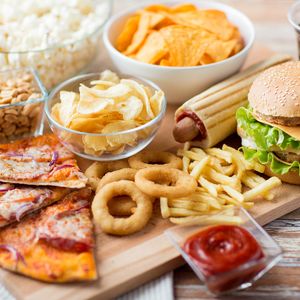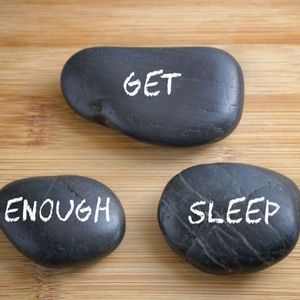

Our Review Process
Our articles undergo extensive medical review by board-certified practitioners to confirm that all factual inferences with respect to medical conditions, symptoms, treatments, and protocols are legitimate, canonical, and adhere to current guidelines and the latest discoveries. Read more.
Our Editorial Team
Shifa Fatima, MSc.
Author
Dr. Apoorva T, MHM.
MEDICAL ADVISOR
Best Food to Increase Running Stamina
Running is becoming one of the most popular sports across the world. For many, it seems to be the starting point of their fitness journey. However, several people are unaware of the much-needed nutrition when it comes to endurance-based activities. Regular practice combined with the right nutrition will reap the best benefits. Before insulin was discovered in 1921, exercise was considered a dangerous activity, usually discouraged due to the high risk of metabolic disorder involved. Currently, exercise is not only considered safe but is prescribed as a basic treatment for the condition, essential for a healthy lifestyle and recommended for all patients with diabetes. The beneficial effects of regular physical exercise associated with diabetes are numerous, offering improved physical capacity, decreased cardiovascular risk and increased emotional and social wellbeing. So what exactly does your body need? Let’s run through!
Table of Contents
The Importance Of Right Nutrition for Running
Running helps your body break down fat and build muscles. While this happens, your body requires the right nutrition for better performance and recovery. Exercise-induced hypoglycemia is described as one of the main factors limiting physical exercise, as well as a cause of poor performance in runners with diabetes. However, certain strategies, such as supplementing carbohydrate intake, can reduce the severity and duration of these episodes, thereby eliminating the fear of exercise-induced hypoglycemia.
Best Nutrition to Increase Stamina for Running
Lack of awareness and absence of proper guidance from a nutrition professional, nutrients such as carbohydrates, proteins and healthy fats take center stage while the micronutrients such as vitamins, minerals and antioxidants are severely ignored. Though the requirements of these nutrients are in a very little amount, their functions are important to improve performance and avoid fatigue and dehydration during the event.
1. Carbohydrates
Carbohydrates ingested in food are the main determinant of blood glucose levels following meals. Both the quantity and quality (or kind of carbohydrate) is particularly influential in the variability of blood glucose levels obtained after intake.
Intake of carbohydrates is necessary as they become the primary source of body fuel. They provide your body energy for
- Physical activities of all intensities
- Securing glycogen stores
- Assuring muscle recovery
- Proper functioning of the central nervous system
- Maintaining blood glucose between meals
The quality or kind of carbohydrate ingested can cause significant variations in one’s response to food, increasing or decreasing the rate at which the carbohydrates contained can be digested as well as their ability to raise blood sugar levels. Certain food-specific factors can increase the rate at which blood glucose levels rise, such as:
- Thermal or mechanical processing. Longer cooking times or certain mechanical processes, such as the milling of grain into flour, increase the food’s absorption rate.
- Degree of starch gelatinization. Applying heat in the presence of water initiates the process of starch gelatinization, which facilitates the breakdown of food by intestinal enzymes during the digestive process, thereby increasing the absorption rate.
- Amylose-amylopectin ratio of starches. Starches are mainly made up of amylose and amylopectin chains. Amylose forms helical structures, unbranched, which are less accessible to digestive enzymes than amylopectin chains.
- Kind of sugar. Fructose has a slower absorption rate than glucose or sucrose. Furthermore, once absorbed by the intestine, it must undergo a series of processes by the liver in order to become glucose. Therefore, fructose-rich foods cause blood sugar to increase more slowly than those that contain other kinds of sugar, such as glucose or even starch, in their composition.
- Other food components. The presence of high amounts of protein, fiber or fat in food can alter the rate of absorption by slowing down the digestive process. Certain condiments such as vinegar are capable of acidifying food, which slows down the digestive process and therefore the absorption of food.
2. Fats
Fats are a great source of energy for athletes who require more than 4000 kcal per day – especially endurance athletes who have an increased ability to utilize fat. However, high fat and low carbohydrate diet or overindulgence in deep-fried foods can lower performance and increase chances of cardiovascular diseases. So remember, fats must not exceed 30% of the total energy consumption. As an athlete, you can include food items that are healthier sources of fats containing omega 3 and 6 fatty acids, proteins, vitamins, magnesium, fiber, and antioxidants. Read more to know about what level of blood sugar is dangerous?
3. Proteins
We cannot stress this enough! Proteins are especially important for an athlete because of their higher lean mass per unit. Upon digestion of proteins, we’re left with amino acids that help maintain tissues and repair muscles. A diet with balanced amounts of carbs and protein will help the athlete gain energy and strength keeping the body active throughout the day. Plant sources of proteins are loaded with antioxidants, phytochemicals, fiber, minerals, and vitamins. Essential amino acids are vital to maintain tissues and for recovery and thus should be added in your daily diet using a variety of plant-based protein sources. Remember, including high fiber or proteins foods, which can take a lot of time to digest are not recommended 4-24 hours before an event.
Pro Tip: Sprouting improves the nutritional value and digestibility of legumes’ allowing them to be consumed raw.
Animal sources of proteins can be recommended since they have high biological value (a measure of the proportion of absorbed protein from a food by a person). Among all animal sources, lean protein is the better choice. Organ meats (liver, kidney, brain, heart), processed meats (sausages, salami, bacon, ham) and red meats (mutton, pork, beef, ready-to-eat marinated meats) tend to be high on cholesterol and sodium and thus should be consumed in restricted amounts.
3. Micronutrients
Adequate intake of micronutrients is particularly essential to health and performance. Micro-nutrients act as a catalyst in our body’s chemical reactions and aid in digestion, absorption and metabolism thereby helping the body to function at an optimal level.
4. Hydration
Hydration is extremely important in the regeneration process. A hydrated body has proper blood consistency and enables the body to function efficiently. A hydrated body aids the growth of muscle tissues and speeds up recovery. Hydration doesn’t necessarily mean just drinking large amounts of water. You can also consume fruits and vegetables that are filled with water.
How To Plan Your Food Before & After the Run?
A prediction of one’s consumption of carbohydrates during and in the hours after physical activity requires a great knowledge and analysis of factors specific to each type of activity. In this sense, the personal observations and experience of each athlete are highly important, assessing the effect of each type of activity on his/her blood sugar levels. It is recommended to monitor blood glucose levels before and after exercise, or, if possible, to use a continuous glucose sensor. In general, the characteristics of the activity to be performed must be known, as these factors affect blood glucose levels to a high degree:
- Type of Exercise : Forms of exercise dominated by the aerobic component, such as walking, running, swimming, skating or cycling, produce greater glucose consumption and, therefore, have a stronger hypoglycemic effect. In contrast, forms of exercise with an elevated anaerobic component, like sprints, combat sports and working with heavy weights, can produce strong adrenergic stimulation (stimulating liver production of glucose) and thus usually have a lesser hypoglycemic effect post-exercise. Competitive sports can also be associated with significant emotional stress (high adrenergic stimulation), which causes increased blood sugar after exercise, especially in children and adolescents.
- Duration : During the first 30-60 minutes of moderate- or high-intensity exercise, muscular and hepatic glycogen becomes the primary muscle fuel. Thereafter, the glycogen stores begin to decrease, and muscles increasingly obtain energy from fatty acids and plasmatic glucose. Following this is when the most significant changes in blood glucose are observed.
- Intensity : Glucose is the preferred muscle fuel for exercise performed at a moderate or high intensity, whereas low-intensity exercise uses fatty acids as energy source. Therefore, low-intensity activities such as walking may have a minimal effect on blood sugar, whereas intense activities such as running could cause a stronger and faster blood glucose lowering effect.
- Frequency : Hypoglycemic effects, especially after exercise, increase after several consecutive days of physical exercise. In this situation, since it is virtually impossible to recover of glycogen stores from one day to another, the body is less able to use the mechanisms of hepatic glycogenolysis to regulate low blood glucose.
- Schedule : The timetable of insulin administration results in the presence of different blood insulin levels throughout the day, which brings about a greater tendency to develop hypoglycemia during physical activity. This effect is more likely when exercise is performed just within 2-3 hours after meals, when rapid-acting insulin acts the strongest.
Also read about benefits of dates for diabetes

Best Foods to Boost Your Stamina
Runners require stamina – and this is no secret. Many times, one might feel tired after exercise or running and this can cause a severe lack of energy which can affect daily activities and life. Overall productivity also decreases. Here is a list of the best food for runners that could help you increase your stamina, particularly, if you are a runner.
- Bananas – How many times have you seen athletes or tennis players picking up a banana and eating it? There is a scientific reason behind it. They provide a lot of energy as they are a power-packed source of potassium, carbs, and Vitamin B6. They are one of the best fruits to have during a workout
- Sweet potatoes – Along with nutrition, they are also tasty. They provide a significant amount of fiber and carbs to the body along with other nutrients like Vitamin A, Manganese, etc. The consumption of sweet potatoes results in a steady supply of energy to the body due to slow digestion. This can last all through the workout.
- Coffee – A treat to the eyes of coffee lovers! Yes, coffee can provide a great energy boost owing to caffeine. It catalyzes the production of a neurotransmitter in the brain that stimulates the brain and the body. Coffee can make you feel alert.
- Oats – Looking for breakfast before your morning run? Oats would be the ideal way to go. It has plenty of carbs (that would be burnt during the workout – not causing sugar spikes) and is also high in fiber. They have a low GI which can help you feel full for longer periods.
- Yogurt – Unsweetened, plain yogurt is rich in protein and macronutrients. It also has the essential amino acids that can speed up the recovery of the muscles post a heavy workout or a run. The calcium content in yogurt can strengthen the bones and boost the immune system.
- Hydration – While water may not be a direct source of energy, it surely helps in the process of overall energy building and ensures that the body does not lose its natural required electrolytes. Drinking enough water can prevent the body from entering a state of dehydration which can also cause fatigue and a loss of energy.
What Foods Should Runners Avoid?
There would be less point in exercising and working out regularly if this part of your daily routine was still not under good control – the foods you should avoid. While it is super important to know what you should be eating, it is equally important to know what is on the ‘not to consume’ list. Foods that will not be counterproductive to your growth and will not cause more harm than good should be avoided.
- Diet Soda/ Sugary drinks – There is a misconception that diet soda can be consumed in large quantities. The reason why this can be harmful is that it contains artificial sweeteners like aspartame that can cause severe issues to the bones and kidneys. Sugary drinks, of course, should be avoided.
- Full-fat dairy – This can cause a weight gain that can be harmful, if you are a runner, and especially if you are living with diabetes. The extra fat and calories are just harmful to the body and can easily be avoided.
- Fried food – While there is no match to the taste of fried food, it is simply unhealthy as they are very high in calories and take longer to digest.
Adapting Nutrition to different kinds of Physical Exercises
The following are examples of nutritional strategies recommended for certain kinds of exercise:
- Short-duration, low-intensity exercise: Exercise such as walking, riding a bike or light swimming, for a period of time less than 30 minutes, is associated with low glucose consumption, thus, its hypoglycemic effect is small. Normally adjusting insulin treatment and increasing carbohydrate intake are not necessary.
- Short-duration, high-intensity exercise: This group includes swimming races or track and field events, such as sprints and hurling (for example, 100 meter dash, shot-putting, etc.), and also combat sports like judo or taekwondo. The brief duration of the exercise means that the complete depletion of glucose is not as significant. Moreover, the elevated intensity of the exercise produces adrenergic activation, which increases the production of glucose by the liver. For these reasons, adjusting insulin doses and supplementing with carbohydrates are usually not necessary.
- Mid-duration aerobic exercise: Training for cycling, swimming or track events, as well as spinning, aerobics or step aerobics sessions, lasting approximately one hour, usually produce a more pronounced hypoglycemic effect. Nevertheless, since the sessions are still relatively brief, the decrease in insulin should be in the range of 10-20% prior to the activity, accompanied by an intake of 20-30g of carbohydrates, preferably fast-absorbing.
- Long-duration exercise: Sporting events such as cycling competitions, triathlons or marathons involve performing exercise of a moderate or high intensity for prolonged periods of time. The consumption of glucose is quite high, depending on the intensity and duration of the activity. The risk of hypoglycemia is very high, both during the activity and up to 24 hours after the activity has ended.
Bottom Line
You are what you eat and to be the best athlete, you must add vital ingredients in your everyday dietary plan. From consuming the right amount of carbohydrates to vitamins, proteins, minerals and not to forget, micronutrients, a balanced diet is key.
FAQs
1. Are Eggs Good for Runners?
Yes, eggs are rich in protein and give a sustained amount of energy to the body to carry out strenuous workouts and fuel your day. It does not cause a spike in blood sugar levels as well. Eggs are also high in Vitamin B
2. Is Milk Good after a Workout?
Some experts suggest that the amount of protein in milk makes it an ideal drink post-workout. It has enough carbs, water, and micronutrients to suffice for a person to help replenish their energy and, therefore, can be consumed after exercise.
3. How much should a Person Run Daily?
A person’s stamina and capacity would be factors to consider before answering this question. However, on average, about 10-20 minutes of slow running/jogging is known to be medically sufficient to reduce the risk of heart attacks, strokes, lowering blood sugars, burning excess body fat, etc.
References
- https://www.healthifyme.com/blog/increase-stamina-naturally-foods-exercises-tips/
Disclaimer
This website's content is provided only for educational reasons and is not meant to be a replacement for professional medical advice. Due to individual differences, the reader should contact their physician to decide whether the material is applicable to their case.
More by Shifa Fathima

अर्जुनरिष्ट के फायदे, खुराक और नुक्सान

मधुमेह के लिए मधुनाशिनी वटी: उपयोग, लाभ, खुराक और दुष्प्रभाव|

मधुमेह को नियंत्रित करें भारतीय आहार से





